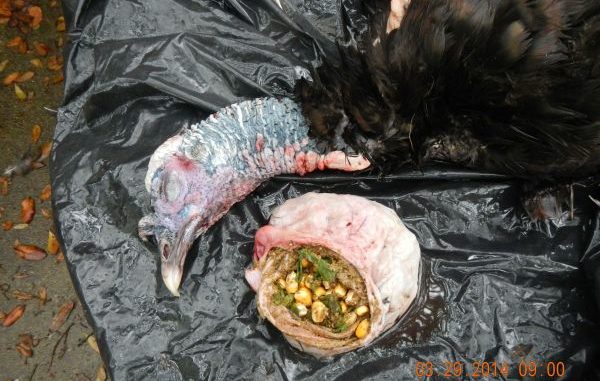
One of the problems with turkey hunting on private land is that landowners and/or hunters on adjacent lands will often set up a site to feed turkeys year round to keep turkeys hanging around.
Feeding turkeys is permitted, but a hunter cannot hunt within 200 yards of the feed.
Doing good habitat work on your land to attract turkeys can offset the problem of corn to some degree. Maintaining spring, summer and winter feeding strips of various seed plants, and planting mast- and fruit-producing trees should enhance your wild turkey habitat.
Last year on both of the small tracts I hunt, adjacent hunters were feeding the turkeys, and the birds were going to those site after daylight. All the calling in the world could not lure them away from their morning breakfast of the yellow gold.
However, I observed that eventually the hens would make their way to our food plots to eat clover — and the toms would follow.
One particular gobbler would follow a few hens in circular route, visiting several plots and would wind up before roosting time at a plot on a hill and crossing back over to the neighbors property, roosting in some pines a few hundred yards away.
My friend Ken from Benton came down, and we made a morning effort to no avail. We hung around on the property until around 11 a.m. But before leaving, we set up his ground blind near the hill patch.
When we came back, I put a hen decoy in the patch and told Ken I thought the tom would leave the patch to the west and come up the woods trail to this patch, see the decoy and give him a shot at some point before it crossed over to go to roost.
Sure enough, the tom did exactly what I thought it would do — it came up the trail to the hill patch, stopped and gobbled at the decoy before Ken dropped it in its tracks.
It was Ken’s first gobbler, a fine East Feliciana Parish adult tom that had a craw full of corn.
I often use trail cameras to monitor the movement of the turkeys and the time when they visit the property. It is then a matter of being there when they are, which can be a problem.
Needless to say, I am not a fan of the feeding/baiting regulation. Feeding can be a contest between landowners in an effort to keep the birds on their properties.
In this situation, the old feral hog can be a friend, particular if he can find the corn piles and cleans them up.


